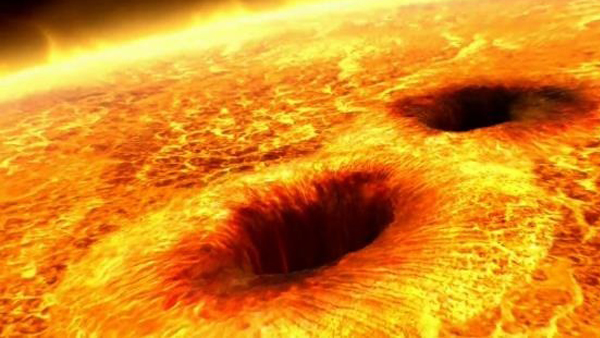Indian scientists have predicted space environmental conditions over the next decade would be similar or slightly harsher compared to the last decade ruling out imminent Sun induced cooling of global climate.
Dibyendu Nandi, Professor at IISER Kolkata who is an associate of Inter University Centre for Astronomy and Astrophysics (IUCAA) in Pune and his PhD student Prantika Bhowmik have devised a novel technique to predict the next sunspot cycle.
The technique used in this research is successful in matching sunspot activity observations over the last one hundred years and also makes it possible to make predictions almost a decade before the next sunspot cycle activity peaks in strength – a first for any team in the world. Their research work appears today in the journal Nature Communications.
The Sun’s activity influences environmental conditions in space adversely affecting satellites and space-based technologies such as telecommunications and navigational networks. Predicting the changes caused by the Sun’s activity level has been challenging for astronomers. The duo however combined two different computer models of the Sun based on complicated mathematical equations, one for studying conditions in its interior where sunspots are created and the other for its surface where sunspots are destroyed, and devised a novel technique to predict the next sunspot cycle.
“Crucially, Indian scientists predict that the next sunspot cycle would not be insignificant. Our forecast surprisingly suggests it could even be stronger than the cycle which is just ending. We expect the next cycle to start rising in about a year following the end of the current sunspot cycle minimum and peak in 2024,” Prof Nandi said. They have predicted space environmental conditions over the next decade would be similar or slightly harsher compared to the last decade. They find no evidence of an impending disappearance of sunspot cycles and thus conclude that speculations of an imminent Sun induced cooling of global climate is very unlikely.
Sunspots are about ten times the size of Earth and have magnetic fields which are ten thousand times stronger. These spots have been observed through telescopes since the times of Galileo and these observations show that there is a cycle of sunspots with some cycles being stronger or weaker than average. The current sunspot cycle dubbed as solar cycle 24 is just ending and it has been one of the weakest cycles in a century, Prof Nandi explained.
The research of the team members was supported by the Ministry of Human Resource Development, Government of India, Indo-French Centre for the Promotion of Advanced Research and NASA. When contacted Prof Somak Raychaudhury, Director of IUCAA told The Indian Express that Bhowmik and Nandy’s mdoels show considerable predictive power .“It looks like we will now be able to predict the fluctuations of sloar activity much more reliably,” Prof Raychaudhury said adding that they were proud of the work done by Indian scientists and specially as Nandy is a university associate of IUCAA.
Source: IE
Image Courtesy: News Mobile
You may also like
-
New Heat-Based Approach To Cancer Treatment Can Reduce Chemotherapy Doses
-
Scientists Take A Major Step Towards Unification Of Classical & Quantum Gravity
-
India Graphene Engineering and Innovation Centre (IGEIC) Under the Vision of Viksit Bharat@2047 Launched
-
New High-Performance Gas Sensor can Monitor Low Level Nitrogen Oxides Pollution
-
Antidepressant Drug can be Repurposed for Treating Breast Cancer
